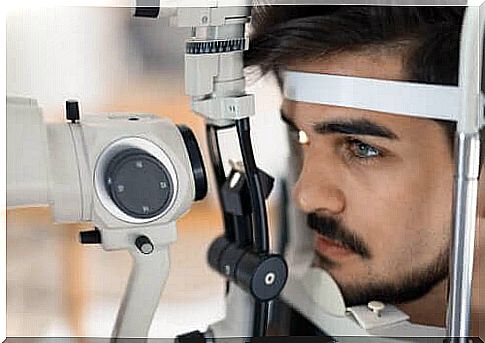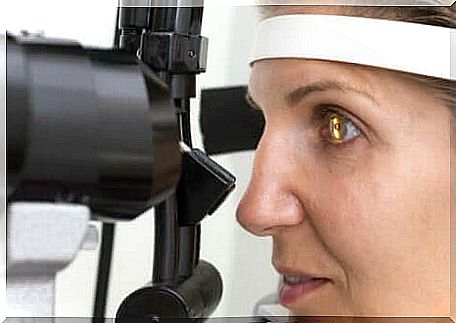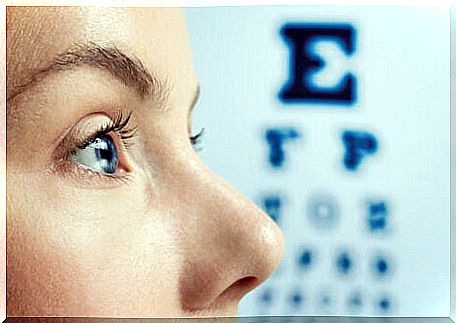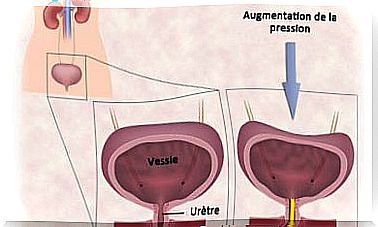What Is Retinitis Pigmentosa?
Retinitis pigmentosa is a very rare disease that affects the eye. Its origin is genetic and the end result is severe loss of vision which, although one is not blind, drastically decreases the quality of life.

The disease known as retinitis pigmentosa consists, in reality, of a set of pathologies which have in common a genetic alteration which modifies the reception of light in the retina. The cells in the back of the eye degenerate gradually as the disease progresses.
It is a rare disorder, with a prevalence of 1 in 3000 people affected. However, if we consider the totality of dystrophies that are transmitted from parents to children, it is the most common. What are the causes of retinitis pigmentosa? Find out more in this article.
Causes of retinitis pigmentosa
This disease is genetic and hereditary. In other words, it is the parents who pass it on to their children because of a mutation in the genes. It refers to a set of disorders and not just one. Indeed, thousands of changes in DNA have been identified, resulting in retinitis pigmentosa.
Despite this, in a third of cases it is impossible to find the origin of the disease. Even though it is still claimed that this is a genetic cause, the mutation that occurs in the cells does not take place in these cases.
Due to this variability, disease transmission is classified into three groups:
- Through the X chromosome: In these cases, only males suffer from the symptoms. While the women are carriers, without declaring the disease at any time, but they transmit it to their boys
- Dominant: Dominant inheritance of a gene means that it is always expressed. In retinitis pigmentosa of this type, all generations of the same family carrying the mutation have vision loss.
- Recessive: unlike the previous one, recessive inheritance does not always appear. So it can happen that parents have symptoms while children do not. Then it skips a generation and the grandchildren develop the symptoms

Symptoms of retinitis pigmentosa
Although it reacts to different mutations, the disease coincides in certain symptoms which are common to all patients. The age of onset of the first signs is usually adolescence.
The progression of retinitis pigmentosa causes progressive loss of vision. But it is not always the same. The most common forms of presentation are:
- Color confusion: As with color blindness, patients confuse one color with another, or do not identify it as such
- Loss of central vision: Central vision is what we use for tasks that require concentration at close range. For example, if the patient loses this ability, it becomes difficult for him to read. This concerns the area of the retina that suffers from this disorder in the first place. A consultation for this symptom can be mistaken for hyperopia. Especially if the person is over 40 years old
- Tunnel vision: this is the opposite process to the previous one. The patient loses his ability to distinguish shapes and colors in the periphery of his visual field. He can clearly only see what is in the center and at a short distance. The term “tunnel” refers to the sensation experienced by those who suffer from it. This vision is not specific to retinitis pigmentosa and can therefore be confused with other pathologies
- Decreased ability to see in the dark: this is one of the most frequent presentations and one that guides the diagnosis. This means that the patient sees normally during the day, but when it is dark or the light goes out in a room, he or she tends to go completely blind.
How to diagnose the disease?
The first thing is the suspicion of retinitis pigmentosa. If it is someone who has a family history, then the doctor will make an assumption early on. But if there is no previous history with parents or grandparents, the task will be more difficult.
Once symptoms have been established, a genetic examination is requested. Using a blood sample, we analyze the composition of genes to locate those that are defective and that could explain the disorder.
It is possible to complete the assessment with an electroretinogram – measurement of the electrical activity of the retina – as well as optical coherence tomography. This last examination consists of a series of images obtained from retinal tissue in high definition.
The visual field is an examination which is always carried out in ophthalmology and which does not contribute to the diagnosis. On the other hand, it is useful to establish the degree of affectation of the patient because it is possible to know to what extent the progression has evolved according to the remaining visual capacity.

Treatment of retinitis pigmentosa
There is no cure for retinitis pigmentosa. Usually, attempts are made to reduce symptoms and slow the progression of blindness in order to improve the quality of life of the affected person.
Some experiments with high doses of vitamin A in the chemical form of palmitate have given good results. However, it is not certain that this is the best treatment. Nor that the adverse effects of such concentrations do not represent risks for other organs, such as the liver.
Anti-inflammatory drops are also prescribed for uncomfortable symptoms such as itching, pain, a feeling of sand in the eye, or redness. These drugs are intended for relief only, but are not chronic treatment options.
In addition, surgery is used in very specific cases. If the disease is accompanied by cataracts, it is possible to operate. In addition, the artificial retinal implant is still being studied to determine its effectiveness.
The importance of prenatal consultation
Since this is a hereditary disease, prenatal consultation for retinitis pigmentosa is essential. Parents who wish to have children and who have already been diagnosed, should seek advice on how to proceed. There is no way to avoid it, but care must be taken.
Finally, if you have eye symptoms or perceive a failure in your vision, do not wait before consulting. The ophthalmologist will know how to implement additional methods to address the problem.









